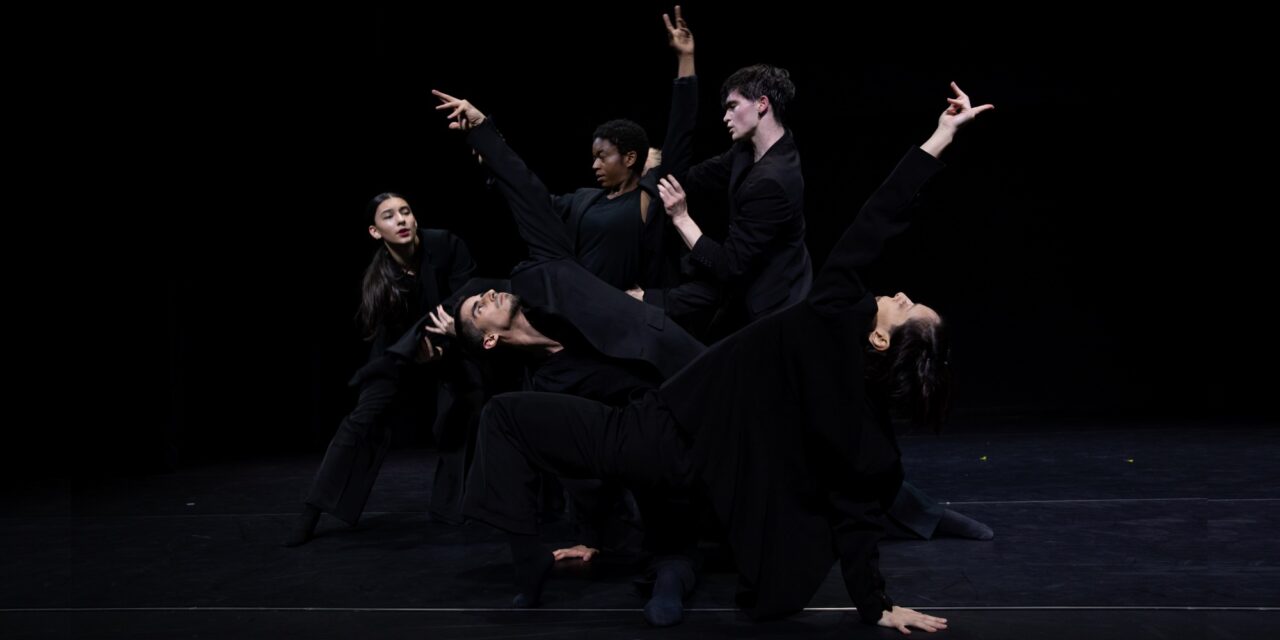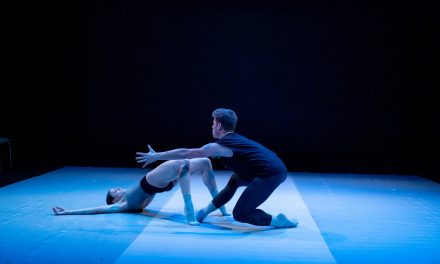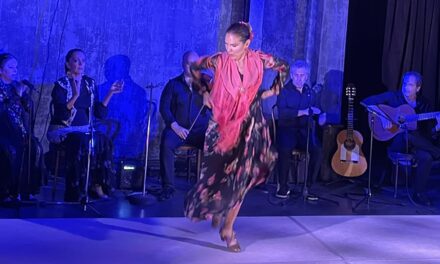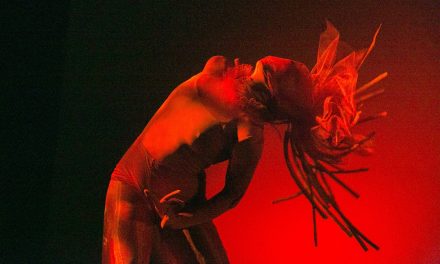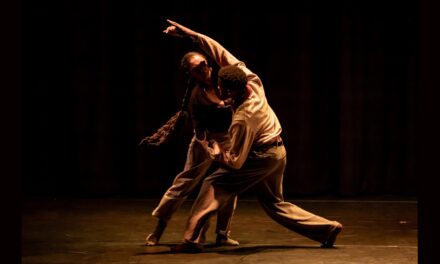This program of Kybele Dance Theater was a culmination of a month-long residency from the Glorya Kaufman Performing Arts Center together with Vista Del Mar. The Glorya Kaufman Performing Arts Center (GKPAC) is a distinctive center fostering innovative multi-disciplinary events to share with a diverse audience and the students of Vista Del Mar Child and Family Services (Vista). In addition, the Center is the proud home of the Therapeutic Arts Program and corresponding on-site rehearsal spaces, worthy of professional-level movement education. The building is home to Vista Del Mar’s innovative therapeutic performing arts program and is designed as a multi-use performing arts facility.
Kybele’s program consisted of three pieces all choreographed by Seda Aybay – “SıNıR/SıZ (Border/less)”, a duet for Seda Aybay and Nico Albuja, “Elveda (Farewell)”, a duet for Jade Lelievre and Monica Moe, and “1881-193∞”, a piece created for her company “to give her (Seda Aybay) thanks and respect to the visionary Atatürk (1881-1938) and share his wisdom”. More on him later.
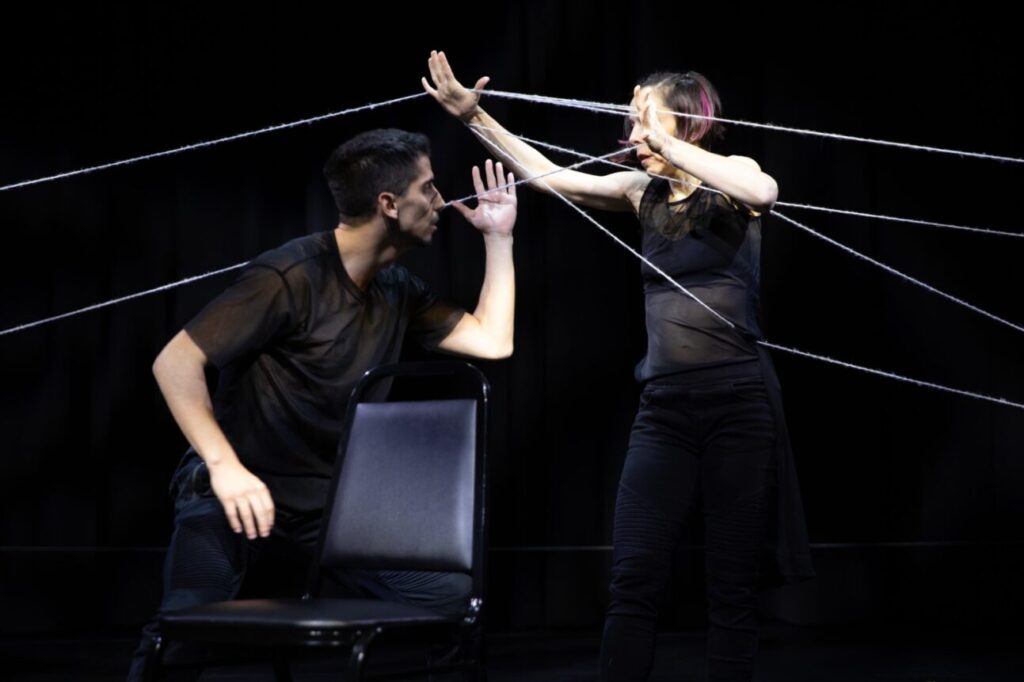
Kybele Dance Theater – “SıNıR/SıZ (Border/less),” choreography Seda Aybay – Photo by Denise Leitner.
“SıNıR/SıZ (Border/less)” has as its set piece a series of ropes tied to a chair and anchored offstage. The two performers must navigate these boundaries in order to move. Program notes state that “This piece reveals a path forward guiding us into untangling divisions that hold us down and rearranging them into ties that connect us”. The metaphor for separateness and then inverting that visual to connectedness works. The space in between the ropes is explored and defined, then the strength of the boundaries themselves. After that it is discovered that the boundaries can be manipulated and should be in order to dismantle ‘us and them’ thinking. The chair remains and serves as a common ground for discovery of the other. Although the two people come together and partner without the bonds of borders or markers of difference they remain separate and share their fears, sorrows, and worry with each other as an integral part of their human condition. Music: Gehen by Swod.
“Elveda is a duet filed with pathos and longing we feel for those who have left us and all we have are memories…” These memories are strewn about the stage as blue flower petals. Jade Lelievre delivers the flower petals from upstage left to down right and laments the loss of someone dear to her. That someone manifests in Monica Moe. This piece is an essay in the sorrow left behind when someone is suddenly gone from us. Ably acted and executed by both performers it was a paean to loss and sorrow equal to Edgar Allan Poe. Lelievre’s costume was a simple blue dress that matched the flower petals and moved well. I thought Moe’s costume a little odd in that it consisted of black sweatpants and a black tank top more suitable for the gym than the Spectre of Death. The piece ended with a beautiful laying of flower petals over Moe much like pouring ashes into a grave.
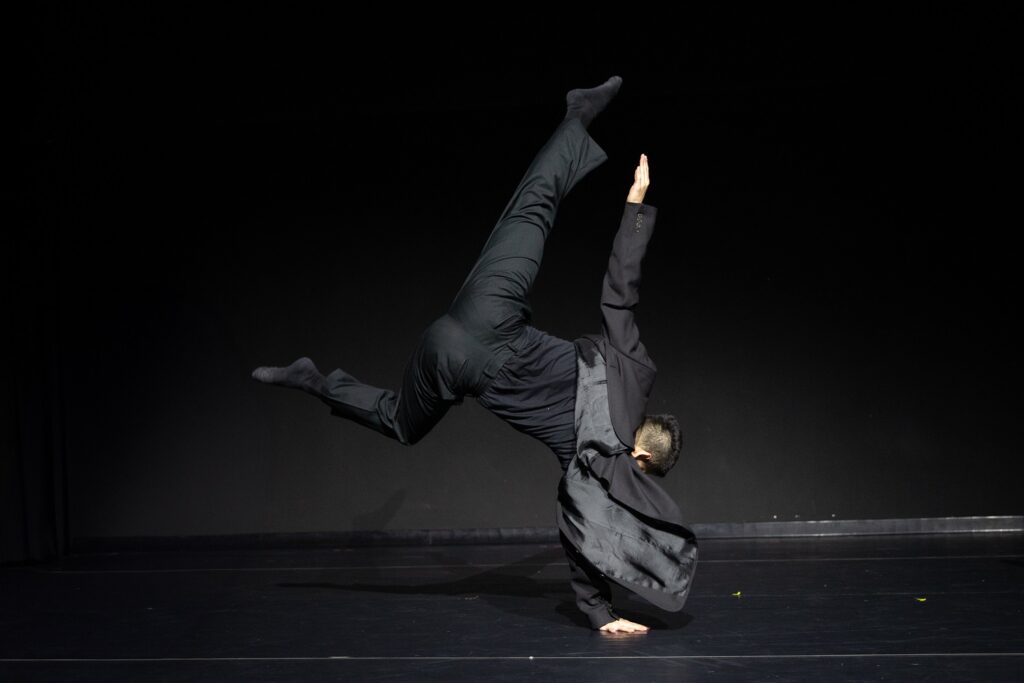
Kybele Dance Theater – Nico Albuja in 1881-193∞, choreography by Seda Aybay – Photo by Denise Leitner.
“1881-193∞” are the dates of birth and death of Mustafa Kemal Atatürk, also known as Mustafa Kemal Pasha and Ghazi Mustafa Kemal. He had a long and illustrious career during a tumultuous time beginning in the Ottoman Empire, and then becoming the founding father of the Republic of Turkey, serving as its first president from 1923 until his death in 1938 – Hence the title of the piece. The costumes for this piece were black suits and strangely there were no shoes. I am well aware that much of Contemporary Dance utilizes socks to perform in and often matches them to whatever costumes are worn. However, if one is wearing a suit coat with slacks and black socks, the costume has not been fulfilled. It is unfinished. Even wearing a suit with bare feet has its place as it sometimes marks the person as dead or going to die in modern mythology. What I saw was a contemporary dance company moving around in suits and socks and not the narrative of what Ataturk possibly did for the Turkish people as a nation. This is obviously a deeply personal work for Aybay, and heartfelt. I was stumped as to find any meaning in it pertaining to Atatürk through the movement of individuals or unison. Aybay’s style is very fluid and there are many beautiful sections, some gorgeous partnering and powerful unison movement. That being said, there were also odd moments such as Simon Lathrop spinning like a top and his supporting foot operating in every way as a gyroscope. Another odd moment was Ariel Scott being overwhelmed by Antonio Vivaldi’s “Winter” – her movement in her solo having little to do with the grandiosity of that piece of music. The abstract nature of Aybay’s choreography does not attach itself to the subject matter she was trying to illuminate. The lighting by Alison Brummer was fantastic in every section and helped deliver the movement. Music: Antonio Vivaldi The Four Seasons recomposed by Max Richter, Sari Zeybek featuring Mustafa Kemal Atatürk.
For the future of Kybele, I would suggest a look at The Law of Diminishing Returns. Casually, the law of diminishing returns is the idea that the more you use something, the less value you get from it. Aybay’s choreography is fluid and relentless. There was hardly a break in the patterns of gesture and partnered manipulation. She would gain much by stillness, breaks in breathing. Also, in terms of themes the evening was one of abject serious angst, loss from death, and ostensibly the life of a man who created the Republic of Turkey. There was no lightness, no mirth, no smiling. I don’t mean one needs to smile like a buffoon to the audience. Simply have a difference in emotion from one piece to the next without hitting that misery button over and over again. Jade Lelievre should be mentioned for her happy smile and enjoyment of dancing, especially during the last piece, she stood out like a beacon in the gloom. The dancers: Seda Aybay, Nico Albuja, Ariel Scott, Simon Lathrop, Jade Lelievre, Monica Moe.
Due to unusual circumstances, Brian Fretté reviewed a video of this program.
To learn more more about Kybele Dance Theater, please visit their website.
To find out more about the Glorya Kaufman Performing Arts Center, please visit their website.
Written by Brian Fretté for LA Dance Chronicle.
Featured image: Kybele Dance Theater in 1981 – 1938, choreography by Seda Aybay – Photo by Denise Leitner.

